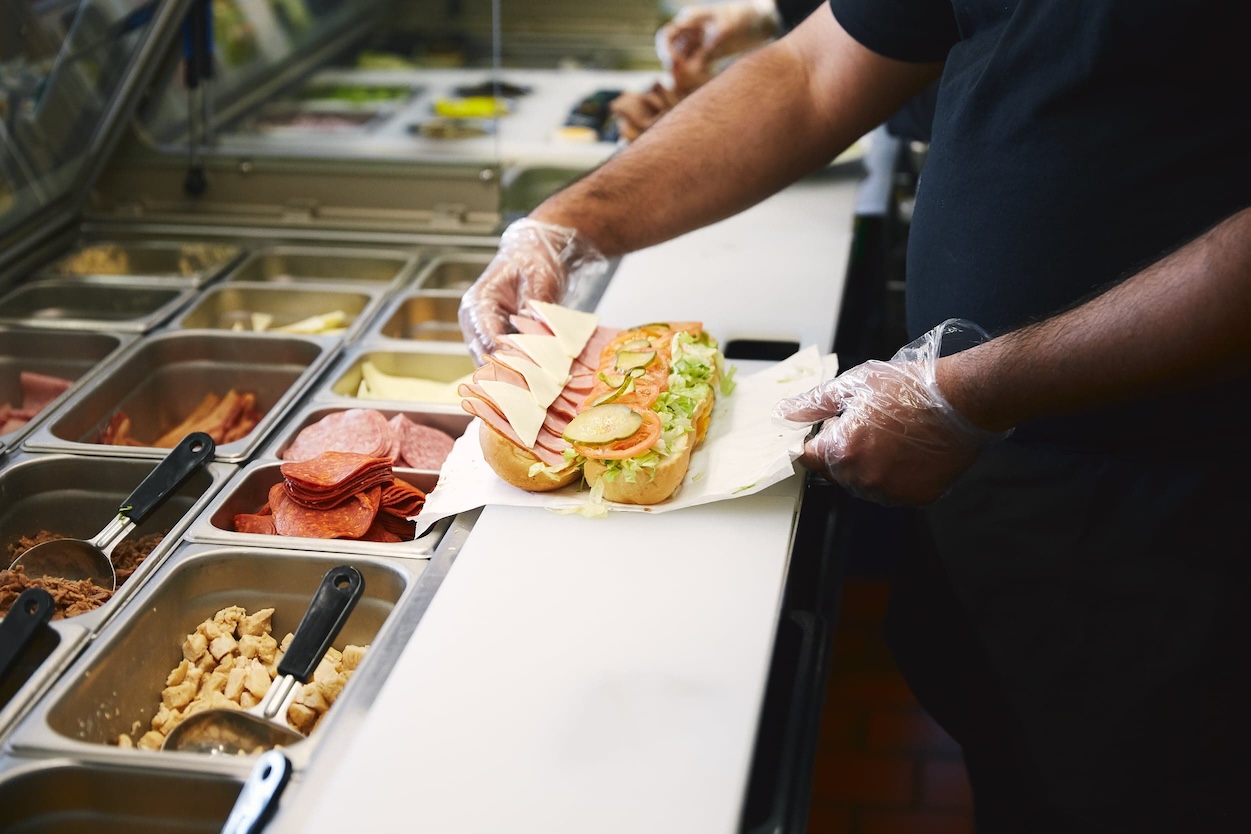Managing employee schedules in quick service restaurants can be a complex balancing act, especially for small business owners in Plainfield, New Jersey. With fluctuating customer demand, varying employee availability, and the need to maintain optimal staffing levels while controlling labor costs, effective scheduling is crucial to operational success. The food service industry in Plainfield presents unique challenges that require specialized scheduling solutions tailored to the fast-paced environment of quick service restaurants. Modern scheduling services offer powerful tools that can transform how small restaurant businesses manage their workforce, improving both operational efficiency and employee satisfaction.
The restaurant landscape in Plainfield has evolved significantly in recent years, with growing competition and changing customer expectations placing additional pressure on quick service establishments to deliver consistent quality with efficient service. Behind every successful quick service restaurant is a well-organized scheduling system that ensures the right employees are working at the right times. Advanced scheduling services now provide small business owners with sophisticated capabilities once available only to larger chains, creating opportunities for local restaurants to optimize their operations, reduce costs, and build more engaged teams.
Challenges of Quick Service Restaurant Scheduling in Plainfield
Small business owners operating quick service restaurants in Plainfield face numerous scheduling challenges that can impact both profitability and employee satisfaction. The city’s diverse population and proximity to major transportation routes create unique patterns of customer traffic that can be difficult to predict. Developing effective schedules requires understanding these local patterns while balancing operational needs with employee preferences and availability. Many restaurant managers still rely on outdated scheduling methods that consume valuable time and lead to inefficiencies.
- Fluctuating Demand Patterns: Plainfield quick service restaurants experience variable customer traffic influenced by local events, weather conditions, and proximity to business districts, requiring flexible staffing solutions.
- Employee Availability Constraints: Many quick service restaurant employees in Plainfield are students or have multiple jobs, creating complex availability patterns that make creating balanced schedules challenging.
- Last-Minute Schedule Changes: Unexpected employee absences and sudden changes in customer demand require agile management of shift changes to maintain service quality.
- Compliance Requirements: New Jersey labor laws regarding breaks, overtime, and minor work restrictions add complexity to restaurant scheduling and increase the risk of costly violations.
- Seasonal Fluctuations: Plainfield’s seasonal events and holiday periods create substantial variations in staffing needs that must be anticipated and planned for effectively.
Traditional scheduling methods like spreadsheets or paper schedules are increasingly inadequate for addressing these challenges. According to industry research, quick service restaurant managers spend an average of 6-8 hours per week creating and adjusting schedules using manual methods. Modern QSR shift scheduling solutions offer automation and intelligence that can dramatically reduce this administrative burden while creating more effective staffing patterns.
Key Features of Effective Scheduling Software for Small Restaurants
For Plainfield’s quick service restaurant owners, identifying the right scheduling solution requires understanding which features will address their specific operational needs. Effective scheduling software should streamline the entire process from creating schedules to communicating with staff and managing changes. The best solutions combine user-friendly interfaces with powerful functionality designed specifically for food service environments.
- Intuitive Schedule Creation: Drag-and-drop interfaces with visual scheduling tools make it easy for restaurant managers to create and modify staff schedules without extensive training.
- Employee Self-Service Options: Platforms that allow employees to view schedules, indicate availability, request time off, and participate in shift marketplaces reduce management workload and increase staff satisfaction.
- Mobile Accessibility: Mobile technology that enables both managers and staff to access schedules from anywhere ensures everyone stays informed about their work commitments.
- Automated Notifications: Instant alerts about schedule changes, open shifts, and scheduling conflicts keep all team members informed and reduce no-shows.
- Integration Capabilities: Software that connects with POS systems, payroll platforms, and other business tools creates a more unified management ecosystem for small restaurant operations.
When evaluating scheduling software options, Plainfield restaurant owners should consider key features specific to employee scheduling needs in food service environments. The most effective solutions are those designed with quick service restaurants in mind, offering templates and functionality that accommodate the unique staffing patterns of breakfast, lunch, and dinner rushes. Features like skill-based scheduling ensure that each shift has the right mix of experienced and newer staff to maintain service quality during peak periods.
Benefits of Modern Scheduling Solutions for Quick Service Restaurants
Implementing advanced scheduling services delivers multiple benefits for Plainfield’s quick service restaurants, affecting everything from operational efficiency to employee retention. Modern scheduling tools transform what was once a tedious administrative task into a strategic advantage. Small business owners who upgrade from manual scheduling methods typically see improvements in multiple areas of their operation, creating a positive impact on both their bottom line and workplace culture.
- Labor Cost Optimization: Intelligent scheduling aligns staffing levels with projected customer demand, helping Plainfield restaurants reduce overstaffing while maintaining service quality during peak times.
- Time Savings for Management: Automated scheduling tools can reduce schedule creation time by up to 75%, allowing managers to focus on customer service, staff development, and other priorities.
- Reduced Employee Turnover: Fair, consistent schedules that respect employee preferences and provide advance notice contribute to improved employee retention, reducing costly turnover in Plainfield’s competitive job market.
- Improved Compliance: Automated rule enforcement helps small restaurants adhere to New Jersey labor regulations, reducing the risk of penalties and legal issues.
- Enhanced Team Communication: Integrated team communication features improve coordination between staff members and managers, creating a more cohesive restaurant operation.
Restaurant owners in Plainfield who have implemented modern scheduling solutions report significant improvements in operational metrics. According to industry data, quick service restaurants using advanced scheduling tools typically see a 3-5% reduction in labor costs while maintaining or improving service levels. This efficiency gain can represent thousands of dollars in annual savings for even small operations. Additionally, the improved work-life balance that comes from better scheduling practices leads to higher employee engagement and shift work satisfaction.
Implementation Strategies for Small Business Scheduling Systems
Successfully implementing a new scheduling system in a Plainfield quick service restaurant requires careful planning and execution. The transition from traditional scheduling methods to digital solutions can seem daunting for small business owners, but a phased approach can make the process manageable. Effective implementation involves not just installing new software but also adapting operational processes and ensuring staff buy-in.
- Assessment and Selection: Begin by evaluating your restaurant’s specific scheduling needs and challenges before selecting the right scheduling software that addresses those requirements.
- Data Preparation: Compile employee information, skill levels, availability patterns, and historical staffing data to create a solid foundation for your new system.
- Phased Rollout: Implement the scheduling solution gradually, starting with basic features before advancing to more sophisticated capabilities like forecasting and analytics.
- Staff Training: Provide comprehensive training for managers and employees on using the new scheduling tools, emphasizing the benefits for all stakeholders.
- Continuous Optimization: Regularly review scheduling outcomes and gather feedback to refine settings and improve results over time.
One crucial element for successful implementation is securing employee adoption. Staff members accustomed to traditional scheduling methods may initially resist change. Effective communication about how the new system benefits them—through features like shift bidding systems and mobile access—can help overcome this resistance. Restaurant owners should emphasize that modern scheduling tools give employees more control over their work schedules while making the process more transparent and fair. Services like Shyft offer user-friendly interfaces that make this transition easier for staff of all technical skill levels.
Mobile and Remote Scheduling Capabilities
In today’s connected world, mobile scheduling capabilities have become essential for Plainfield’s quick service restaurants. Both managers and employees expect the convenience of accessing and managing schedules from their smartphones or tablets. Modern scheduling services offer robust mobile functionality that enables real-time schedule management regardless of location, providing flexibility that traditional scheduling methods simply cannot match.
- On-the-Go Schedule Access: Mobile apps allow staff to view their upcoming shifts, check for schedule changes, and manage their availability from anywhere.
- Real-Time Updates: Managers can make immediate schedule adjustments in response to changing conditions, with automatic notifications sent to affected employees.
- Remote Manager Approvals: Shift swap requests, time-off applications, and other scheduling changes can be reviewed and approved by managers even when they’re away from the restaurant.
- Clock-In/Clock-Out Integration: Advanced mobile platforms can integrate time tracking with scheduling, allowing employees to clock in and out directly from their phones.
- Location-Based Features: Geofencing capabilities ensure that employees can only clock in when they’re actually at the restaurant location in Plainfield.
The COVID-19 pandemic accelerated the adoption of remote scheduling tools, as restaurant managers needed to make rapid staffing adjustments in response to changing regulations and business conditions. Even as operations have normalized, the benefits of technology in shift management remain clear. Mobile scheduling creates more agile restaurant operations that can quickly adapt to unexpected circumstances, from sudden staff absences to unusual spikes in customer traffic. For small restaurant owners in Plainfield, this flexibility is particularly valuable given the dynamic nature of the local market.
Employee Engagement through Scheduling Flexibility
In Plainfield’s competitive labor market, quick service restaurants must offer attractive working conditions to recruit and retain quality staff. Scheduling flexibility has emerged as a key factor in employee satisfaction and engagement. Modern scheduling services provide tools that balance business needs with employee preferences, creating a more collaborative approach to workforce management that benefits both the restaurant and its team members.
- Preference-Based Scheduling: Systems that capture and honor employee availability and shift preferences lead to higher job satisfaction and reduced absenteeism.
- Shift Swapping Capabilities: Self-service tools that allow employees to trade shifts (subject to manager approval) provide flexibility while ensuring adequate coverage.
- Advanced Notice of Schedules: Publishing schedules further in advance gives employees better work-life balance and reduces last-minute conflicts.
- Fair Distribution of Desirable Shifts: Automated systems can ensure equitable allocation of popular and less popular shifts among staff members.
- Work-Life Balance Support: Scheduling that respects personal commitments and provides consistent patterns helps reduce burnout in fast-paced restaurant environments.
Research shows that restaurants offering greater scheduling flexibility experience turnover rates 17-28% lower than industry averages. In an industry where annual turnover can exceed 70%, this represents significant cost savings in recruitment, onboarding, and training. Effective scheduling practices are particularly important for Plainfield restaurants that employ students from nearby educational institutions, who need work schedules that accommodate their class commitments. Solutions like Shyft offer small business scheduling features specifically designed to support this kind of flexibility while maintaining operational efficiency.
Compliance with New Jersey Labor Laws and Regulations
Scheduling practices in Plainfield quick service restaurants must comply with New Jersey’s labor laws and regulations. The state has specific requirements regarding minimum wage, overtime, meal breaks, and the employment of minors that directly impact restaurant scheduling. Non-compliance can result in significant penalties, making regulatory adherence a critical concern for small business owners. Modern scheduling services incorporate compliance features that help restaurants navigate these complex legal requirements.
- Overtime Management: Automated tracking of hours worked helps prevent unplanned overtime and ensures proper compensation when overtime is necessary, in accordance with overtime management best practices.
- Break Compliance: Scheduling tools can enforce required meal and rest breaks for shifts of certain durations, meeting New Jersey’s labor standards.
- Minor Work Restrictions: Systems can be configured to prevent scheduling underage employees during school hours or beyond legal working hours for their age group.
- Record Keeping: Digital scheduling platforms maintain comprehensive records of work schedules, time off, and schedule changes that may be required for regulatory compliance or audit purposes.
- Predictive Scheduling Considerations: While New Jersey hasn’t yet implemented predictive scheduling laws (which require advance notice of schedules), modern systems support best practices that prepare businesses for potential future regulations.
Staying current with legal compliance requirements is an ongoing challenge for restaurant operators. New Jersey’s minimum wage is scheduled to increase annually, affecting labor cost calculations and scheduling decisions. Advanced scheduling platforms automatically update with regulatory changes, helping Plainfield restaurant owners remain compliant without constant manual oversight. This protection against potential violations and penalties represents significant value for small businesses that may not have dedicated HR or legal departments monitoring regulatory developments.
Data-Driven Scheduling for Optimizing Restaurant Operations
Modern scheduling services offer powerful data analytics capabilities that transform workforce management from guesswork to precision. For Plainfield quick service restaurants, data-driven scheduling leverages historical patterns, sales data, and other metrics to create optimal staffing levels that match anticipated demand. This approach not only reduces labor costs but also improves customer service by ensuring appropriate staffing during busy periods.
- Demand Forecasting: Advanced systems analyze historical sales data alongside factors like weather, local events, and seasonality to predict customer traffic and staffing needs.
- Labor Cost Projections: Real-time visibility into scheduled hours and associated costs allows managers to optimize schedules within budget constraints.
- Performance Metrics Integration: Scheduling systems can incorporate employee performance data to ensure high-performing teams during peak business hours.
- Schedule Effectiveness Analysis: Post-shift analytics compare projected versus actual needs, creating a feedback loop for continuous improvement of scheduling accuracy.
- Custom Reporting: Tailored reports help identify scheduling patterns, labor cost trends, and opportunities for efficiency improvements specific to Plainfield market conditions.
The data capabilities of modern scheduling solutions create a competitive advantage for quick service restaurants in Plainfield. For example, comprehensive scheduling software can identify that a particular restaurant location needs more staff on Tuesday evenings due to a recurring community event nearby, or that rainy weather typically reduces foot traffic by a predictable percentage. These insights allow for precision scheduling that would be impossible with traditional methods. Additionally, integration with point-of-sale systems creates powerful connections between sales data and labor planning, enabling restaurant employee scheduling that maximizes productivity and customer satisfaction.
Cost Considerations and ROI for Small Business Scheduling Solutions
For Plainfield’s small quick service restaurant owners, the investment in scheduling services must deliver measurable returns. Modern scheduling solutions are available at various price points, with options ranging from basic systems to comprehensive workforce management platforms. Understanding the total cost of ownership and potential return on investment is essential for making informed decisions about which solution best fits a restaurant’s needs and budget.
- Subscription Models: Most scheduling services use monthly subscription pricing based on the number of employees or locations, allowing small restaurants to scale costs as they grow.
- Implementation Expenses: Initial setup costs may include data migration, system configuration, and staff training, though many providers offer assistance to minimize these expenses.
- Time Savings Valuation: The hours saved on schedule creation and management represent significant value when converted to manager hourly rates.
- Labor Cost Reduction: Optimized scheduling typically reduces labor costs by 3-5% through better alignment of staffing with demand patterns.
- Turnover Cost Avoidance: Improved scheduling practices reduce employee turnover, avoiding costs associated with recruiting and training new staff.
When calculating ROI, Plainfield restaurant owners should consider both tangible and intangible benefits. Beyond direct labor savings, modern scheduling tools improve service quality by ensuring appropriate staffing during peak hours, potentially increasing sales and customer satisfaction. They also reduce compliance risks that could result in costly penalties. Many small restaurants find that their scheduling software investment pays for itself within 3-6 months through labor cost savings alone. Customizable shift templates for restaurant scheduling further enhance efficiency by allowing managers to quickly replicate successful staffing patterns for similar business conditions.
Conflict Resolution and Schedule Management
Schedule conflicts and disputes are inevitable in quick service restaurants, particularly in busy Plainfield establishments where staff members have varying commitments and preferences. Modern scheduling services provide structured processes for managing these challenges, reducing the interpersonal friction that can damage team morale and productivity. Effective conflict resolution features help maintain a positive workplace culture while ensuring consistent restaurant operations.
- Automated Conflict Detection: Systems can identify scheduling conflicts before they occur, such as double-booking employees or scheduling beyond availability constraints.
- Transparent Request Processes: Formal channels for submitting and tracking time-off requests create clarity and fairness in how schedule accommodations are managed.
- Shift Coverage Solutions: When conflicts arise, platforms can automatically identify qualified employees who are available to cover shifts.
- Manager Oversight Tools: Approval workflows ensure that all schedule changes maintain appropriate staffing levels and skill coverage for each shift.
- Communication Channels: Integrated messaging features facilitate clear communication about scheduling issues between managers and staff.
Conflict resolution in scheduling is particularly important for Plainfield’s diverse workforce, where employees may have cultural differences, language barriers, or varying expectations about work schedules. Advanced scheduling tools provide objective, rule-based systems that help ensure fair treatment while maintaining operational requirements. By establishing clear protocols for handling schedule conflicts, these systems reduce the perception of favoritism that can undermine team cohesion in small restaurant environments.
Conclusion
Effective scheduling services represent a significant opportunity for Plainfield’s quick service restaurants to improve operations, reduce costs, and create better working environments for employees. By implementing modern scheduling solutions, small business owners can transform what was once a tedious administrative burden into a strategic advantage. The right scheduling system balances business needs with employee preferences, ensures compliance with New Jersey labor regulations, and provides valuable data insights that drive continuous improvement. For Plainfield’s competitive quick service restaurant market, the efficiency and flexibility offered by advanced scheduling tools can make the difference between struggling to maintain margins and building a thriving, profitable business.
Restaurant owners should evaluate their current scheduling practices and consider how modern solutions could address their specific challenges. Whether dealing with unpredictable customer traffic, high employee turnover, or compliance concerns, there are scheduling services designed to meet the unique needs of quick service establishments in Plainfield. By selecting the right platform and implementing it effectively, small restaurant businesses can create more predictable operations, reduce unnecessary labor costs, and build more engaged teams. In an industry where margins are tight and competition is fierce, the operational advantages provided by sophisticated scheduling services can deliver sustainable competitive benefits for local quick service restaurants.
FAQ
1. What features should I look for in scheduling software for my quick service restaurant in Plainfield?
Look for software with intuitive schedule creation tools, mobile accessibility, employee self-service options, automated notifications, and integration capabilities with your existing systems. Quick service restaurants in Plainfield should prioritize features that address the unique challenges of the local market, such as flexible shift templates to handle variable customer traffic patterns and compliance tools for New Jersey labor laws. The ability to forecast staffing needs based on historical data and local events can be particularly valuable for optimizing labor costs while maintaining service quality during busy periods.
2. How can scheduling software help reduce labor costs in my Plainfield restaurant?
Scheduling software reduces labor costs through several mechanisms: aligning staffing levels with projected customer demand to prevent overstaffing, minimizing unplanned overtime through better hour tracking and alerts, reducing time spent on administrative scheduling tasks, decreasing turnover by improving schedule fairness and work-life balance, and identifying long-term staffing pattern efficiencies through data analytics. Many Plainfield restaurant owners report labor cost savings of 3-5% after implementing advanced scheduling systems, which can translate to thousands of dollars annually even for small operations.
3. What New Jersey-specific regulations should I be aware of when scheduling restaurant employees?
New Jersey restaurant owners need to comply with several state-specific regulations: the state minimum wage (which increases annually and is higher than the federal minimum), overtime requirements for work exceeding 40 hours per week, meal and rest break provisions, strict regulations regarding minor employment (including limited hours during school days and prohibited late-night work), and record-keeping requirements. Additionally, while New Jersey hasn’t yet implemented predictive scheduling laws, employers should stay informed about potential changes to regulations that might require advance notice of schedules or compensation for last-minute changes.
4. Is it difficult to implement a new scheduling system in a small Plainfield restaurant?
Implementing a new scheduling system can be straightforward with proper planning and the right provider support. Most modern scheduling services offer guided setup processes designed specifically for small businesses with limited technical resources. The key elements for successful implementation include: thorough data preparation (employee information, availability, and skills), adequate staff training, a phased approach that introduces features gradually, clear communication about the benefits for all stakeholders, and ongoing optimization based on feedback and results. Many vendors provide dedicated onboarding support to ensure a smooth transition from legacy scheduling methods.
5. How do scheduling services help with employee retention in quick service restaurants?
Scheduling services improve employee retention by addressing several key factors that influence job satisfaction: providing greater schedule predictability through advance posting of schedules, offering flexibility through shift swapping and preference-based assignments, ensuring fairness in the distribution of desirable and less desirable shifts, supporting work-life balance by honoring availability constraints, and creating transparency in how scheduling decisions are made. In Plainfield’s competitive labor market, these benefits help quick service restaurants retain valuable staff members who might otherwise seek employment with competitors offering more flexible or accommodating scheduling practices.












